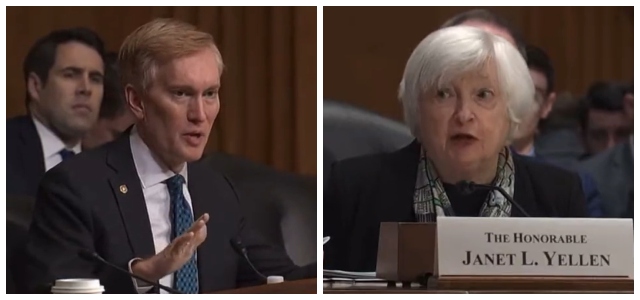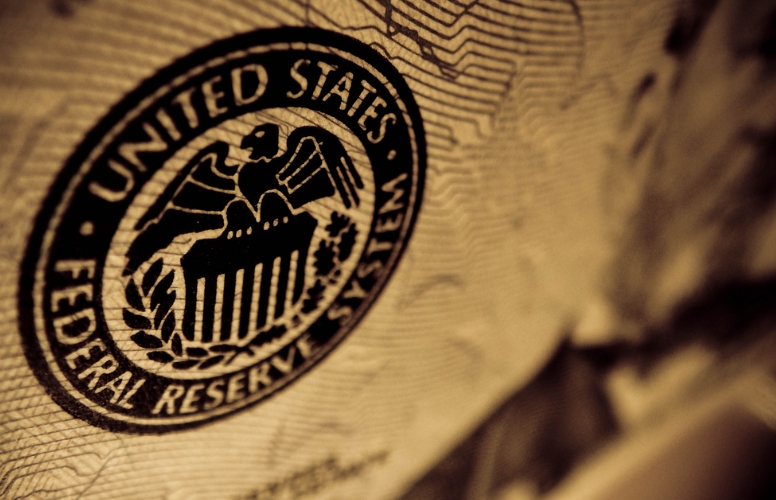Emergency loans to banks spike to record level as they borrow eye-watering $153 billion, a 3,000% surge from previous week
03/21/2023 / By JD Heyes

After the 2008 financial crisis Americans were told that a law passed by Congress expanding federal authority over the financial industry and creating an all-powerful new federal agency — the Consumer Financial Protection Board — that we’d never have another problem.
As usual, Democrats — who were in charge of Congress and the White House at the time — lied, as evidenced by the current (and worsening) banking crisis.
This week saw a record-breaking spike in bank borrowing from the US Federal Reserve, with a total of $153 billion borrowed. This surpasses the previous peak during the 2008 financial crisis, and highlights the urgency of banks’ need for liquidity. The unprecedented borrowing was made through the Fed’s discount window, which provides 90-day loans to banks at the current policy rate of 4.75 percent, which has risen steeply over the past year.
The sharp increase in borrowing can be attributed to the recent failures of Silicon Valley Bank and Signature Bank. This has fueled concerns that a wider banking crisis could impact smaller and mid-sized US banks, the UK’s Daily Mail has reported.
“The sharp increase in banks’ emergency borrowing from the Fed’s discount window speaks to the funding and liquidity strains on banks, driven by weakening depositor confidence,” wrote Moody’s analysts in a note on Friday. “The data indicate the ongoing, credit negative strain on bank funding, in line with Moody’s negative outlook on the US banking system.”
The recipients of the funding provided by the Fed were not disclosed, and the number of banks that applied for the loans was not specified. Banks can access primary credit through the Fed’s discount window, and are allowed to provide a diverse range of assets as collateral, such as loan portfolios, as well as long-term securities like Treasuries and mortgage-backed securities, the outlet’s report continued.
As of March 8, the Fed reported that short-term loans through the discount window amounted to $4.58 billion, which was consistent with recent patterns. However, just a week later, after the failure of SVB and Signature, this number skyrocketed to $152.85 billion, surpassing the previous record of $110.7 billion, which was set in late October 2008, said the Daily Mail.
Meanwhile, the Bank Term Funding Program, which offers more favorable terms but more stringent collateral requirements, saw lower demand, with banks only borrowing $11.9 billion this week.
It’s worth noting that the aforementioned figures do not account for the $143 billion in loans that the Fed provided to the holding companies of SVB and Signature. These loans were intended to secure the uninsured deposits of the two collapsed banks. The holding companies for both banks were established by the Federal Deposit Insurance Corporation after it assumed control of their assets and operations. The funds were directed to these holding companies, the report said.
According to Michael Feroli, an economist at JPMorgan Chase, the total assistance provided by the Fed to banks at this time is only about half of what it was during the financial crisis that took place 15 years ago. During that period, the Fed employed various emergency funding facilities to provide aid to struggling banks.
“But it is still a big number,” he said in an analyst note. ‘The glass half-empty view is that banks need a lot of money. The glass half-full take is that the system is working as intended.”
The lending efforts of the Fed aim to tackle the liquidity challenges that led to the collapse of Signature Bank and Silicon Valley Bank over the previous weekend. These banks had invested a significant portion of their assets in government-backed bonds, including Treasuries, which saw their value decrease due to the Fed’s aggressive interest rate hikes over the past year. As a result of escalating deposit outflows, Silicon Valley Bank was compelled to sell off a substantial amount of its bond holdings to Goldman Sachs at a loss of $1.8 billion.
This news sparked panic, resulting in a surge of deposit outflows amounting to $42 billion in a single day, which ultimately led to the failure of the bank, the report said.
Things are only likely to get worse from here. Be prepared.
Sources include:
Submit a correction >>
Tagged Under:
bailout, bank bailout, borrowing, central bank, Collapse, debt bomb, deception, depositors, dollar demise, FDIC, FDIC takeover, Federal Reserve, finance riot, financial collapse, financial losses, Inflation, lies, money supply, record borrowing, risk, Signature Bank, Silicon Valley Bank, SVB, takeover, taxpayer abuse
This article may contain statements that reflect the opinion of the author
RECENT NEWS & ARTICLES
COPYRIGHT © 2017 PENSIONS.NEWS
All content posted on this site is protected under Free Speech. Pensions.news is not responsible for content written by contributing authors. The information on this site is provided for educational and entertainment purposes only. It is not intended as a substitute for professional advice of any kind. Pensions.news assumes no responsibility for the use or misuse of this material. All trademarks, registered trademarks and service marks mentioned on this site are the property of their respective owners.

















